Discipline and professionalism
As smoke filled the cabin of Japan Airlines Flight 516 Airbus A-350 after its fiery landing in Tokyo on Tuesday, a child’s voice rang out above the chaos on board. “Please take me out quickly!” the child pleaded, using a polite form of Japanese despite the panic that gripped passengers as flight attendants began shouting instructions.
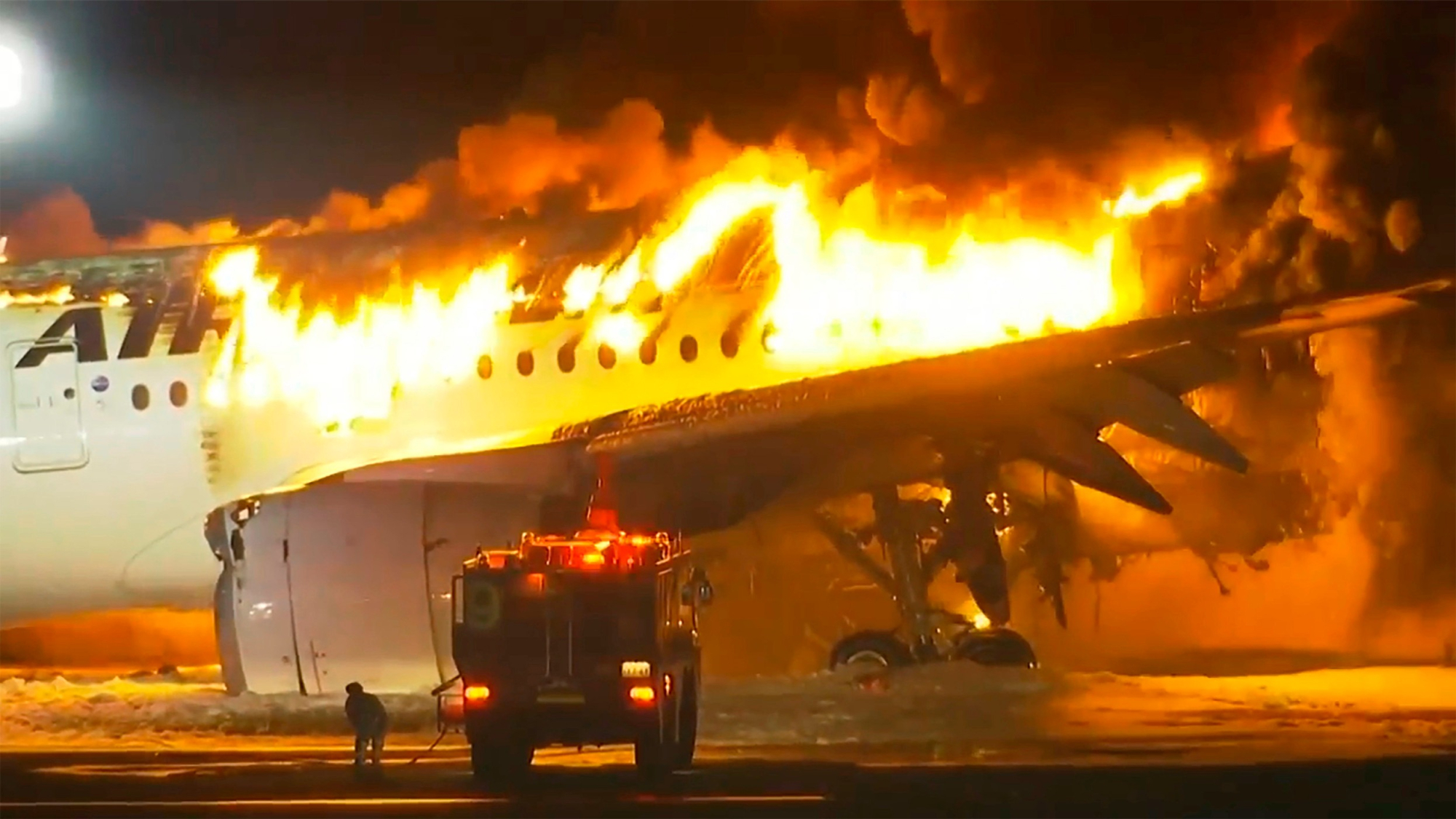
The fire engulfed the Japan Airlines A-350 but all passengers were able to evacuate safely - Photo: The Guardian
In the minutes that followed, even as the flames that would eventually engulf the plane flickered outside the windows, order remained. Flight attendants evacuated all 367 passengers through the three exits deemed safest, one by one down the emergency slides, with no serious injuries. Most left behind everything but their phones.
While several factors contributed to what many call the Haneda Airport miracle: a highly trained 12-man crew; veteran pilots with 12,000 hours of flying experience; and advanced aircraft design and materials, the near-total lack of panic on board during the emergency procedures probably helped the most.
“Although I heard screaming, most people were calm and didn’t get up from their seats, but stayed seated. That’s why I think we were able to get out smoothly,” said Aruto Iwama, a passenger who gave a video interview to The Guardian.
Yasuhito Imai, 63, a company executive in the Tokyo suburbs who flew back from the northern province of Hokkaido, told the Jiji Press online newspaper that the only thing he took from the plane was his smartphone. “Most of us took off our coats and were shivering from the cold,” Mr. Imai said. He added that although some children were crying and others were screaming, “we were able to evacuate without panic.”
Tadayuki Tsutsumi, a Japan Airlines official, said the most important factor in a crew's performance in an emergency is "controlling panic" and determining which exit is safe to use.
Commenting on the accident, several former flight attendants also described the rigorous training and drills that crew members undergo to prepare for such emergencies.
Yoko Chang, a former flight attendant and current cabin crew instructor, echoed similar sentiments. “When we train for evacuation procedures, we constantly use smoke/fire simulations to ensure we are mentally prepared for when such situations arise in real life,” she wrote on Instagram.
The value of an advanced aircraft
A Japan Airlines Airbus A-350 caught fire after colliding on the runway with a smaller plane (a Bombardier Dash-8) of the Japan Coast Guard on the evening of January 2, local time, at Haneda Airport, Tokyo.
A day later, clues began to emerge about the cause of the disaster that killed five Coast Guard members en route to provide earthquake relief on Japan's west coast.
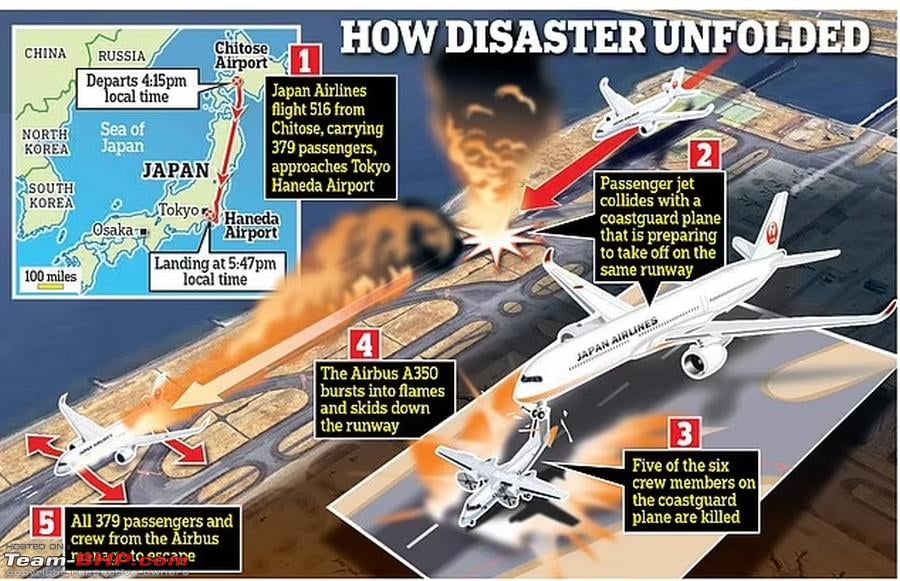
Illustration of the crash scene, as the Coast Guard plane approached the A-350's runway. Graphic: The Sun
In audio recordings of communications between the air traffic control tower and both the Japan Airlines plane and the Japan Coast Guard plane, it appears that the commercial flight was given permission to land while the propeller plane was told to “taxiway to the takeoff holding point” next to the runway.
Officials are trying to figure out why the Coast Guard plane stopped on the runway. Takuya Fujiwara, an investigator with the Japan Transport Safety Board, told reporters that the agency had collected the voice recorder - known as the black box - from the Coast Guard plane but was still looking for the recorder from the A-350.
In video footage of the A-350 landing, it appears to be on fire as it taxis down the runway, making it hard to believe anyone could have left the plane uninjured.
But the fuselage withstood the flames from the engines for 18 minutes from the time the plane hit the ground at 5:47 p.m. until the last person left the plane at 6:05 a.m. That 18 minutes included gliding about two-thirds of a mile down the runway before the plane stopped and the evacuation slides could open, said Yasuo Numahata, a spokesman for Japan Airlines.
Experts believe that, in addition to the crew being trained to evacuate the cabin within 90 seconds in an emergency landing, the technical specifications on the two-year-old Airbus A350-900 may have given those on board a little more time to prepare for an escape.
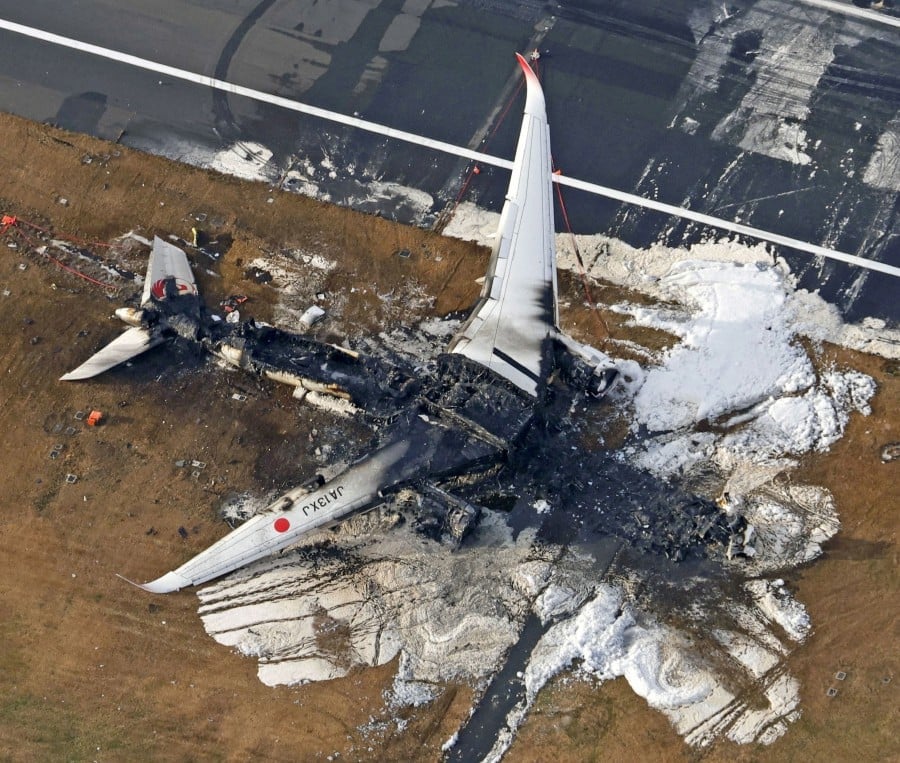
A Japan Coast Guard Bombardier Dash-8 burned after the collision, killing all five people on board. Photo: New Straits Times
Dr Sonya Brown, senior lecturer in aerospace design at the University of New South Wales (Sydney, Australia) said firewalls around the engine and nitrogen pumps in the fuel tank helped prevent immediate fire while fire-resistant materials on the seats and floor likely also helped prevent the fire from spreading.
“There is a level of fire resistance that slows the initial fire progression. If we have things that slow the spread, we can increase the chance of getting people out safely,” Ms. Brown told The New York Times.
Sean Lee, an Airbus spokesman, said the A350-900 is equipped with four emergency exits and slides that can be used to exit from both sides of the plane. Mr. Lee said the plane has floor lighting on both sides of the aisle and “the fuselage is largely made of composite materials, which have fire resistance comparable to aluminum.” Aluminum is generally considered to be highly fire resistant.
Japan Airlines said 15 people were injured during the evacuation, none of them critically. Such results are remarkable, said Kazuki Sugiura, an aviation analyst in Tokyo.
“In an emergency like this, there are usually quite a few injured,” said Mr. Sugiura, who has studied air accidents for more than 50 years. “The evacuation slides were moved by the wind, and passengers fell from the emergency exits one after another, so everyone fell to the ground and most of them were injured.” So the 15 injured can be considered a lucky number.
But of course, luck would not have come if the crew and passengers on the Japan Airlines plane had not maintained the spirit of discipline that has made the Japanese famous.
“The Japan Airlines crew did a really good job in this case. And the fact that passengers didn’t stop to get their carry-on luggage or slow down the exit while leaving the plane was also very important,” said Dr Sonya Brown, a lecturer in aerospace design at the University of New South Wales.
Quang Anh
Source


![[Photo] President of the Cuban National Assembly visits President Ho Chi Minh's Mausoleum](https://vphoto.vietnam.vn/thumb/1200x675/vietnam/resource/IMAGE/2025/10/1/39f1142310fc4dae9e3de4fcc9ac2ed0)
![[Photo] Keep your warehouse safe in all situations](https://vphoto.vietnam.vn/thumb/1200x675/vietnam/resource/IMAGE/2025/10/1/3eb4eceafe68497989865e7faa4e4d0e)
![[Photo] Hanoi morning of October 1: Prolonged flooding, people wade to work](https://vphoto.vietnam.vn/thumb/1200x675/vietnam/resource/IMAGE/2025/10/1/189be28938e3493fa26b2938efa2059e)



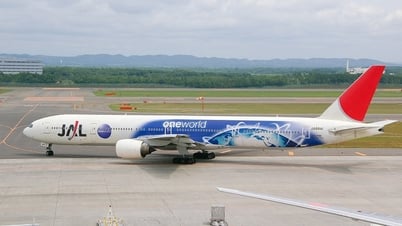
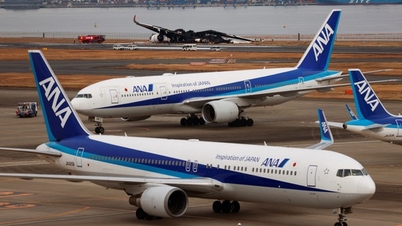


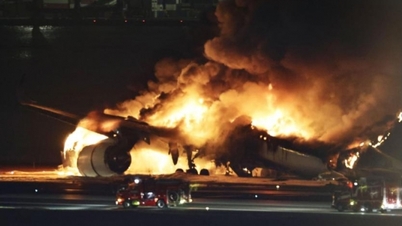




















































































Comment (0)